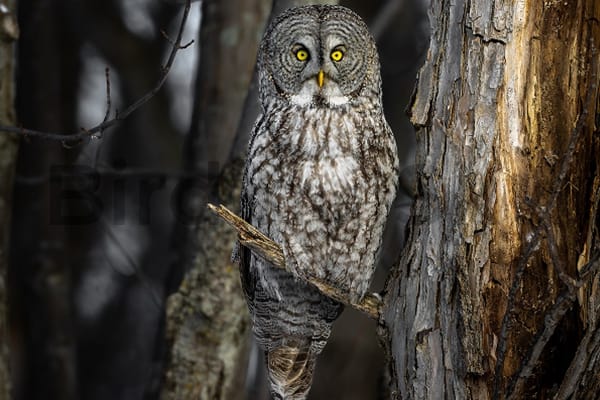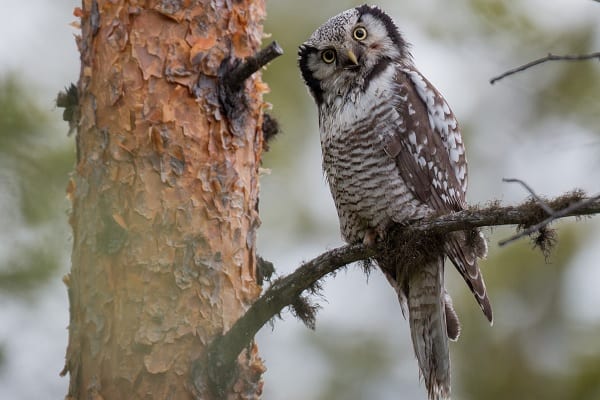Owls in Michigan are fascinating and diverse. You can hear the Great Horned Owl’s hoot or spot the Barn Owl’s white face in the dark. But where do they live? And how many kinds are there? Join me as I research the amazing world of Michigan’s owls and reveal their secrets
Where to Find Owls in Michigan?
Owls live in different places. Some like forests, some like fields, and some like barns. You can find owls in Michigan all year round. But you have to be quiet and patient. Owls are shy and nocturnal. That means they are active at night.
How Many Owls Are in Michigan?
Michigan has 12 species of owls. That’s a lot! Some of them are easy to recognize, like the Great Horned Owl and the Barn Owl. Some of them are hard to spot, like the Northern Saw-whet Owl and the Long-eared Owl. Each owl has its own features and habits. Let’s learn more about them
Key Takeaways:
- Michigan is home to a diverse range of owl species.
- The Great Horned Owl is one of the most common owl species in Michigan.
- The Barn Owl can be found in farmlands, grasslands, and marshes.
- The Long-Eared Owl and Short-Eared Owl prefer open habitats like fields and meadows.
- The forests and woodlands of Michigan are home to the Northern Saw-Whet Owl, Barred Owl, and Eastern Screech Owl.
Here Are 11 Amazing Types Of Owls in Michigan
Great Horned Owl

The Great Horned Owl is one of the most common owl species in Michigan. Its distinctive horn-like tufts, yellow eyes, and deep hooting call make it easily recognizable. These formidable hunters can be found throughout the state, inhabiting a variety of wooded areas, including forests, swamps, and even suburban parks and gardens.
To increase your chances of spotting a Great Horned Owls in Michigan, it’s best to venture out during the twilight hours, as these owls are primarily active at dusk and dawn. Keep an eye out for their large nests, which are often constructed in the abandoned nests of other birds or within tree cavities.
| Features | Habitat | Preferred Prey |
|---|---|---|
| Distinctive horn-like tufts | Forests | Small mammals (mice, rabbits) |
| Yellow eyes | Swamps | Medium-sized birds (ducks, pheasants) |
| Deep hooting call | Suburban parks and gardens | Reptiles and amphibians (snakes, frogs) |
Keep in mind that Great Horned Owls are territorial creatures, so it’s important to maintain a respectful distance and observe them from afar. If you’re lucky enough to witness their majestic flight or the nurturing of their young, it’s an experience you won’t soon forget.
Also Read Owls in New Jersey
Barn Owl
The Barn Owl is a mesmerizing owl species that can be found in various habitats across Michigan. With its distinctive heart-shaped face and ethereal pale plumage, the Barn Owl is truly a sight to behold.

These ghostly-looking owls make their homes in farmlands, grasslands, and marshes, where they can find ample hunting grounds. The open spaces and abundance of prey in these areas make them ideal habitats for the Barn Owl.
Unlike many other owl species, the Barn Owl doesn’t hoot. Instead, it produces a screeching call that can be eerie to hear in the quiet of the night. This call is often likened to the sound of a cat or a banshee, adding to the mystique of these remarkable birds.
The Barn Owl’s hunting prowess is unmatched. With their exceptional hearing and sharp vision, they are highly skilled nocturnal hunters. They primarily feed on small mammals such as mice, rats, and voles, helping to control their populations and prevent crop damage.
Due to their nocturnal nature, spotting a Barn Owl in the wild can be a thrilling experience. They are most active during the twilight hours of dusk and dawn, when they venture out in search of food.
Related Article Owls in Virginia
Interesting Facts about Barn Owls:
- Barn Owls have the best low-light vision of any animal.
- They can rotate their heads up to 270 degrees, allowing them to scan their surroundings without moving their bodies.
- Their feathers are specially adapted for silent flight, enabling them to approach their prey stealthily.
- Barn Owls are monogamous and typically mate for life.
“The Barn Owl is a captivating creature that thrives in Michigan’s diverse landscapes. Its unique appearance and hunting abilities make it a true marvel of nature.” – William Johnson, Wildlife Photographer
Long-Eared Owl and Short-Eared Owl
The state of Michigan is home to two fascinating owl species – the Long-Eared Owl and the Short-Eared Owl. While these owls share similar habitats and characteristics, they also have distinct features that set them apart.
About the Long-Eared Owl

The Long-Eared Owl, scientifically known as Asio otus, is a medium-sized owl species that can be found throughout Michigan. As the name suggests, this owl has long ear tufts, which are actually just feathers used for camouflage and communication rather than ears. With a wingspan of around 35-39 inches, the Long-Eared Owl has excellent maneuverability
- Distinctive Features:
- Long ear tufts that resemble horns
- Orange eyes
- Rusty brown and streaked plumage
- Preferred Habitat:
- Open habitats such as fields, meadows, and marshes
Must Visit Owls In Colorado
About the Short-Eared Owl

The Short-Eared Owl, scientifically known as Asio flammeus, is another owl species that calls Michigan its home. While it shares similar open habitats with the Long-Eared Owl, the Short-Eared Owl has its own unique characteristics.
- Distinctive Features:
- Short ear tufts that are often difficult to see
- Yellow eyes
- Mottled brown and streaked plumage
- Preferred Habitat:
- Open habitats such as fields, meadows, and marshes
| Owl Species | Distinctive Features | Preferred Habitat |
|---|---|---|
| Long-Eared Owl | Long ear tufts, orange eyes, rusty brown and streaked plumage | Open habitats such as fields, meadows, and marshes |
| Short-Eared Owl | Short ear tufts, yellow eyes, mottled brown and streaked plumage | Open habitats such as fields, meadows, and marshes |
Must Explore OWLS IN ILLINOIS
Northern Saw-Whet Owl, Barred Owl, Eastern Screech Owl
When delving into the forests and woodlands of Michigan, prepare to be enchanted by the Northern Saw-Whet Owl, Barred Owl, and Eastern Screech Owl. These diminutive owls embody the charm and allure of Michigan’s avian inhabitants. Their distinct calls and expert camouflage make them fascinating to observe in their natural habitats.

The Northern Saw-Whet Owl is a mesmerizing sight, with its large yellow eyes and endearing appearance. Despite its size, this owl is a skilled hunter, feeding on small mammals and birds. Look for this elusive creature in dense coniferous forests across Michigan. They often seek shelter in tree cavities or nest boxes.
An encounter with the Barred Owl will surely leave you captivated. This owl stands out with its deep hooting call and striking barred plumage. Found in mixed hardwood forests and swamps, the Barred Owl is known for its adaptability and ability to thrive in various habitats.
The Eastern Screech Owl may be small, but its call packs a significant punch. Listen for its haunting trills and tremolos in woodlands and suburban areas throughout Michigan. This owl comes in two color morphs – red and gray – blending seamlessly with their surroundings to remain hidden from predators.
Northern Saw-Whet Owl, Barred Owl, Eastern Screech Owl at a Glance:
| Owl Species | Habitat | Distinctive Feature |
|---|---|---|
| Northern Saw-Whet Owl | Dense coniferous forests | Large yellow eyes |
| Barred Owl | Mixed hardwood forests and swamps | Deep hooting call, barred plumage |
| Eastern Screech Owl | Woodlands and suburban areas | Haunting trills, gray or red color morphs |
Exploring Michigan’s forests will reward you with the opportunity to encounter these charismatic owls. Keep your ears tuned to their distinct calls and your eyes peeled for their expertly camouflaged plumage, and you’ll be sure to witness the beauty and wonder of these remarkable species.
Michigan is a haven for owl enthusiasts, offering the opportunity to encounter several rare and majestic owl species. Among these are the Snowy Owl, Great Gray Owl, Northern hawk owl, and Boreal Owl. These captivating birds of prey can be found in unique habitats throughout the state, making Michigan an ideal destination for owl enthusiasts and nature lovers.
Snowy Owl

The Snowy Owl, with its distinctive white plumage, is a sight to behold. These magnificent birds are typically found in open fields, dunes, and shorelines, favoring areas resembling their Arctic tundra homes. Keep an eye out for these iconic owls during the winter months when they venture south in search of food.
Great Gray Owl

The Great Gray Owl, one of the largest owl species, inhabits the quiet forests and woodlands of Michigan. Its mottled gray plumage allows it to blend seamlessly into its surroundings, making it a master of camouflage. Patient observers can spot this elusive owl perched on the branches of old trees, silently waiting for its next meal.
Northern Hawk-Owl

If you’re searching for a truly unique owl encounter, look no further than the Northern Hawk-Owl. This owl species prefers the boreal forests, where it uses its exceptional hunting skills to catch small mammals and birds. Its distinctive facial expressions and long tail feathers make it a delight to observe.
Boreal Owl

Last but certainly not least, the Boreal Owl is a small but mighty species that calls Michigan home. These owls can be found in dense coniferous forests, nesting in cavities or abandoned woodpecker holes. Listen for their characteristic trilling calls as you explore the peaceful wilderness of Michigan.
Frequently Asked Questions
Q1: What are the most common owls in Michigan?
The most common owls in Michigan include the Eastern Screech Owl, Great Horned Owl, Barred Owl, and the Northern Saw-whet Owl.
Q2: Are there owls in Detroit?
Yes, owls can be found in Detroit, with species like the Eastern Screech Owl and Great Horned Owl being present in and around the city.
Q3: Do owls live in Michigan in the winter?
Yes, many owl species stay in Michigan during the winter. Some, like the Snowy Owl, are even more commonly seen in the state during the colder months.
Q4: Do owls nest in Michigan?
Yes, owls do nest in Michigan. Various owl species build nests in trees, abandoned nests of other birds, or even on the ground, depending on the species and habitat availability.
